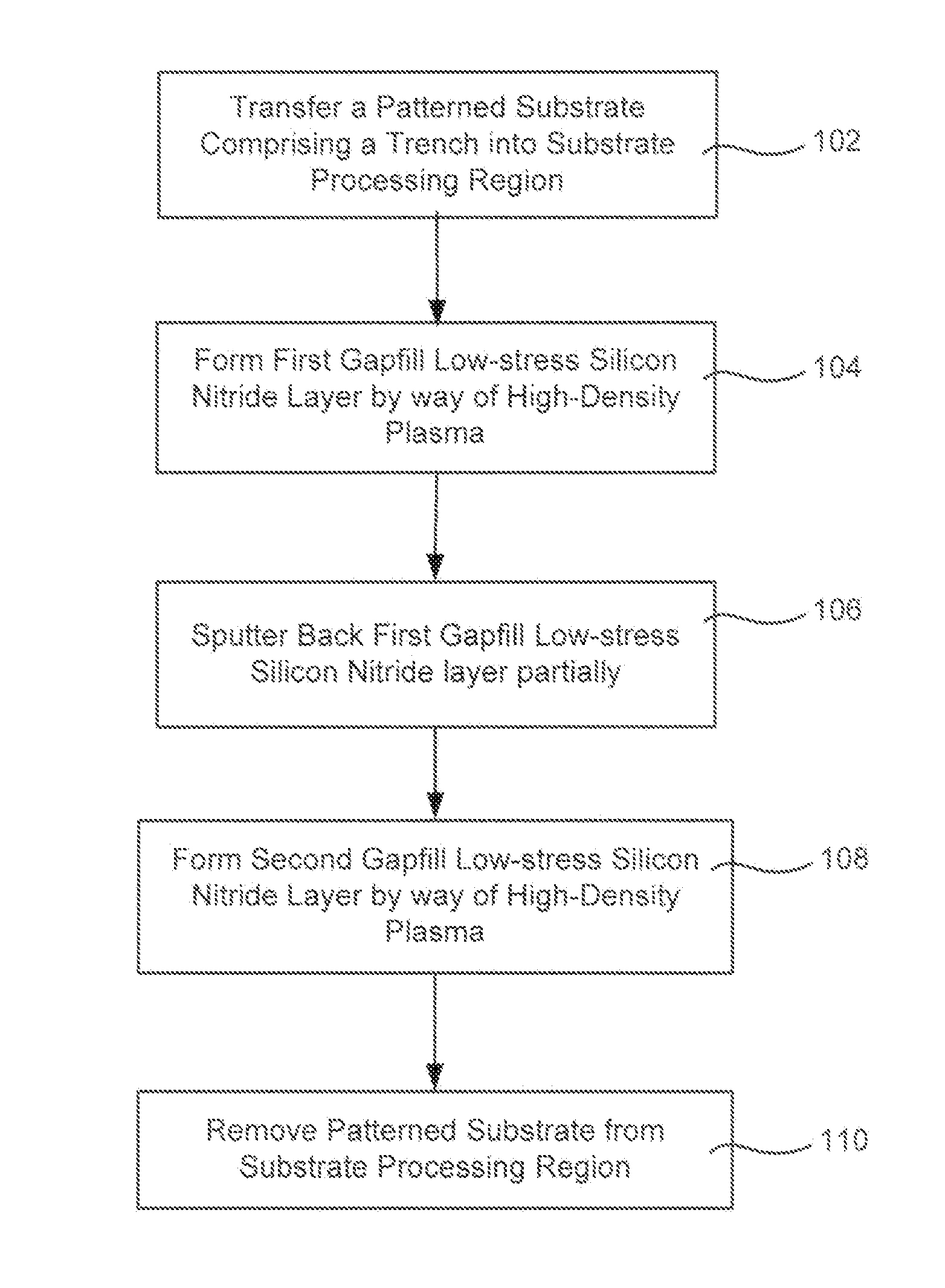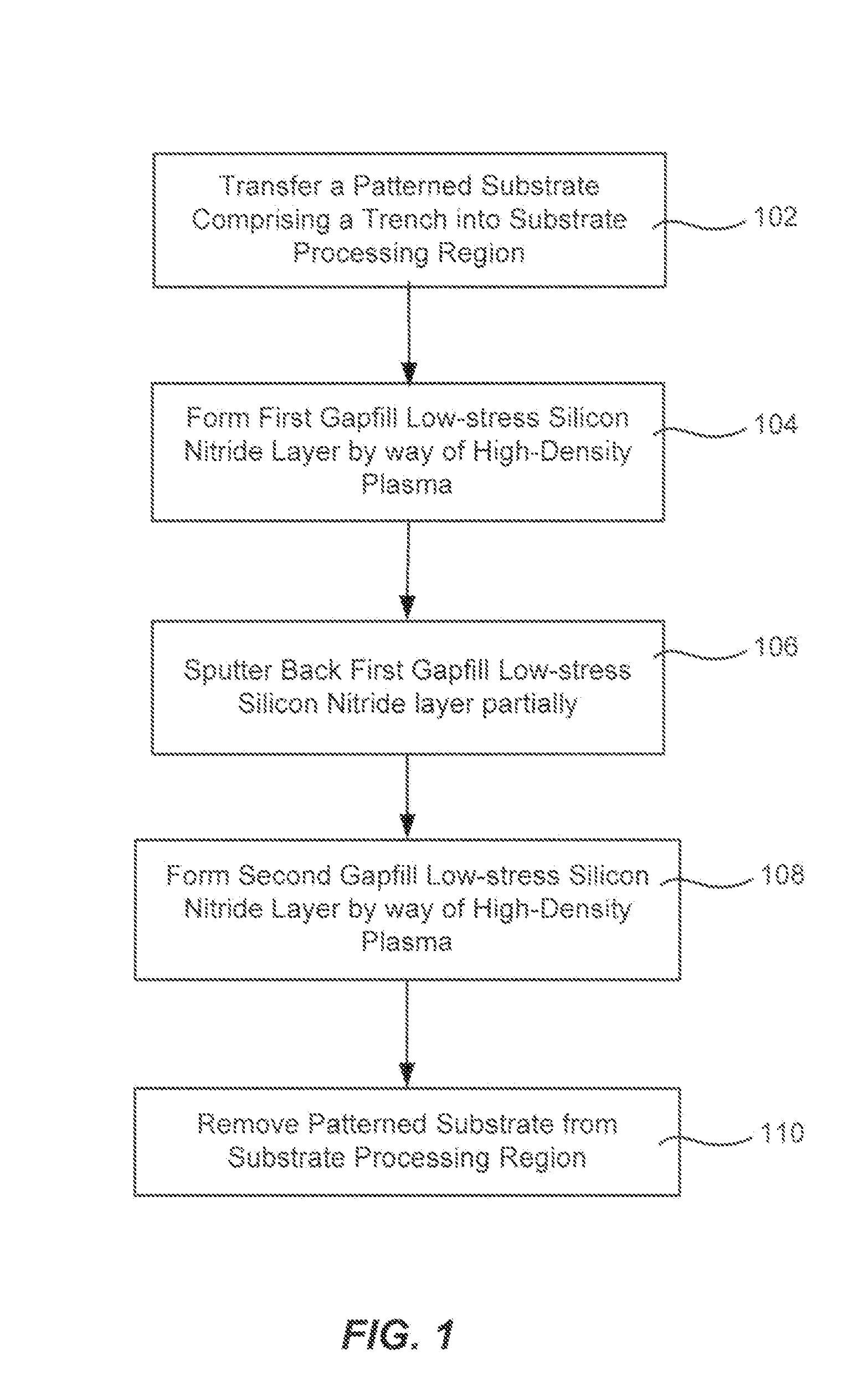Silicon nitride gapfill implementing high density plasma
a technology of silicon nitride and high density plasma, which is applied in the direction of coating, chemical vapor deposition coating, metallic material coating process, etc., can solve the problems of dielectric material, dielectric material, and structural features of the device having decreased spatial dimensions,
- Summary
- Abstract
- Description
- Claims
- Application Information
AI Technical Summary
Benefits of technology
Problems solved by technology
Method used
Image
Examples
Embodiment Construction
[0013]Methods of filling features with silicon nitride using high-density plasma chemical vapor deposition are described. Narrow trenches may be filled with gapfill silicon nitride without damaging compressive stress. A low but non-zero bias power is used during deposition of the gapfill silicon nitride. An etch step is included between each pair of silicon nitride high-density plasma deposition steps in order to supply sputtering which would normally be supplied by high bias power.
[0014]Methods of depositing silicon nitride on patterned substrates have been developed using high-density plasma techniques. Methods of filling trenches with gapfill silicon nitride layers have been developed for patterned substrates. Applying nonzero but relatively low bias power during deposition has been found to reduce stress yet still enable silicon nitride to fill gaps in high aspect ratio trenches. Interleaving a sputtering / etching step between otherwise adjacent low-bias SiN HDP steps has been fo...
PUM
| Property | Measurement | Unit |
|---|---|---|
| bias power | aaaaa | aaaaa |
| bias power | aaaaa | aaaaa |
| bias power | aaaaa | aaaaa |
Abstract
Description
Claims
Application Information
 Login to View More
Login to View More - R&D
- Intellectual Property
- Life Sciences
- Materials
- Tech Scout
- Unparalleled Data Quality
- Higher Quality Content
- 60% Fewer Hallucinations
Browse by: Latest US Patents, China's latest patents, Technical Efficacy Thesaurus, Application Domain, Technology Topic, Popular Technical Reports.
© 2025 PatSnap. All rights reserved.Legal|Privacy policy|Modern Slavery Act Transparency Statement|Sitemap|About US| Contact US: help@patsnap.com



